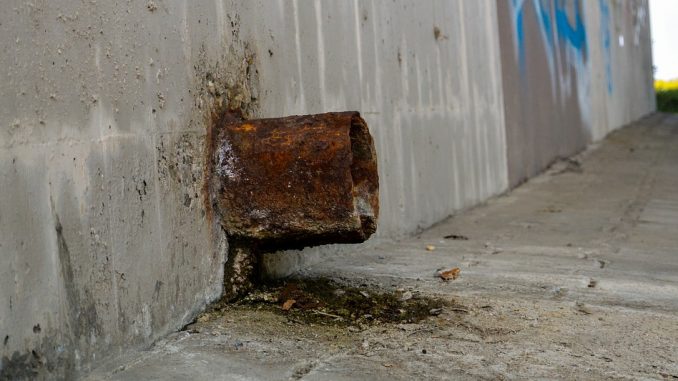
The pipes and sewers of the United Kingdom are no stranger to foreign materials being flushed into them.
Lockdown brought that sharply into focus with parts of the country experiencing problems and blockages from paint, paper towels, wet wipes, newspapers, fat and even clothes.
None of those can hold a torch to what happens when concrete enters the nation’s pipework system, however. You do not need a degree in science to know that concrete sets rather hard and in sewers, that causes serious issues with damages running into hundreds of thousands of pounds.
Blockages caused by concrete are known as concretebergs and they are much more common than you might realise – we just don’t get to hear about them much as they are rarely acknowledged in public.
A report into concretebergs carried out by Construction News revealed that many incidents are covered by non-disclosure agreements between the contractor or persons responsible for the blockage and the water company whose network it occurs on.
These NDAs are put in place because costs are agreed between the parties out of court. Developers would rather pay off the water company for the damage and inconvenience caused than go through lengthy legal proceedings which might otherwise hold up construction.
There is some data available that highlights the problems caused by concretebergs. In 2017-18, Welsh Water experienced 220 blockages caused by cement, concrete rubble and bricks.
A concreteberg in Islington made headlines in 2019 due to its sheer size. 330 feet of concrete weighing as much as 20 elephants blocked three central London sewers on Thames Water’s network and cost £150,000 to remove.
Removing a concreteberg is a challenge. In Islington, it involved workers manually chipping away using tools including pneumatic drills and high-pressure jets until the blockage cleared.
While that was going on, wastewater tankers were needed on site 24 hours a day to remove sewerage which would have otherwise been unable to flow through the pipe network, eventually leading to contaminated water flooding into streets and nearby properties.
Sometimes, it is not possible to remove a concreteberg. One situation in London saw an egg-shaped brick sewer half-filled with concrete. Digging the concreteberg out would have been so costly and damaging to the existing sewer that it was decided to build a brand new sewer next to the ruined one instead.
The contractor responsible for the concreteberg had to pay for the replacement sewer and associated pipework with the costs running easily into six figures.
At this point, you might be wondering how concrete enters sewers and pipework systems. After all, you would have to be pretty foolish to knowingly pour a hard-setting material down a drain, although rogue builders have been known to do this.
The most common cause of concretebergs is piling during construction. As concrete is poured into the foundations of new buildings, it can sometimes escape into sewers.
Drains on construction sites are meant to be capped off to prevent this happening. Contractors should – somewhat ironically – use a layer of concrete to deliberately block off the sewer system, preventing any construction materials or waste from accessing the pipe network.
Other possible causes of concretebergs include when concrete walling – known as diaphragm walling – is used in the construction of massive tunnel shafts and basements.
Installing a horizontal strip foundation made of concrete can also lead to contractors accidentally breaking into sewers and there have been suggestions in the past that contractors washing out concrete mixers with water which then flows into open drains could be a contributor.
Once concrete begins pouring into a sewer, it will travel for between 328 and 984 feet before it begins to set. The curing process takes 24-48 hours, which means that problems are only identified two days after the concrete entered the system when drains stop working and toilets fail to flush.
On occasions, concretebergs can be unknowingly caused by construction firms. One rare example of a contested liability case making it all the way to court came in 2008 when Northumbrian Water alleged that a firm employed by Sir Robert McAlpine had tapped into and blocked a drain with concrete in Newcastle.
The contractor argued that it could not be held responsible as the sewer appeared on just one planning document from 1908. The drain had not been mapped once for 100 years and nobody was aware of its existence until the concreteberg appeared.
Incidents like the one in Newcastle involving unchartered sewers are rare, but they do happen. Until Britain’s vast underground network of pipes, sewers, cables and tunnels is properly mapped – as ordnance survey have proposed should be done – then there will be a chance that an unknown facility could become inadvertently damaged.
It is not just construction firms and building sites that need to watch whether concrete is entering a sewer. Homeowners using cement in DIY tasks might think that disposing of a small quantity of concrete via their drains is safe, but even that will set hard inside the pipe network and prevent wastewater from flowing properly.
If you need to dispose of concrete or other excess building materials, then you should wait for it set and then remove it as one solid mass.

Leave a Reply